AMD Ryzen 3 5300G Review
We recently checked out AMD's Ryzen 7 5700G and Ryzen five 5600G processors featuring Vega graphics in the promise that perhaps these APUs might present a valid stop-gap solution for PC gamers holding out for amend graphics card pricing.
As discussed in our review, the R7 5700G doesn't make sense at the rather loftier $360 asking price, and we experience AMD needs to slash about $100 off that cost to even consider it. Although information technology packs 8 cores and xvi threads, the chip packs simply half the L3 cache of fully-fledged Zen three parts, such as the Ryzen 7 5800X, meaning the 5700G is much slower for CPU related tasks, including gaming with a discrete GPU.
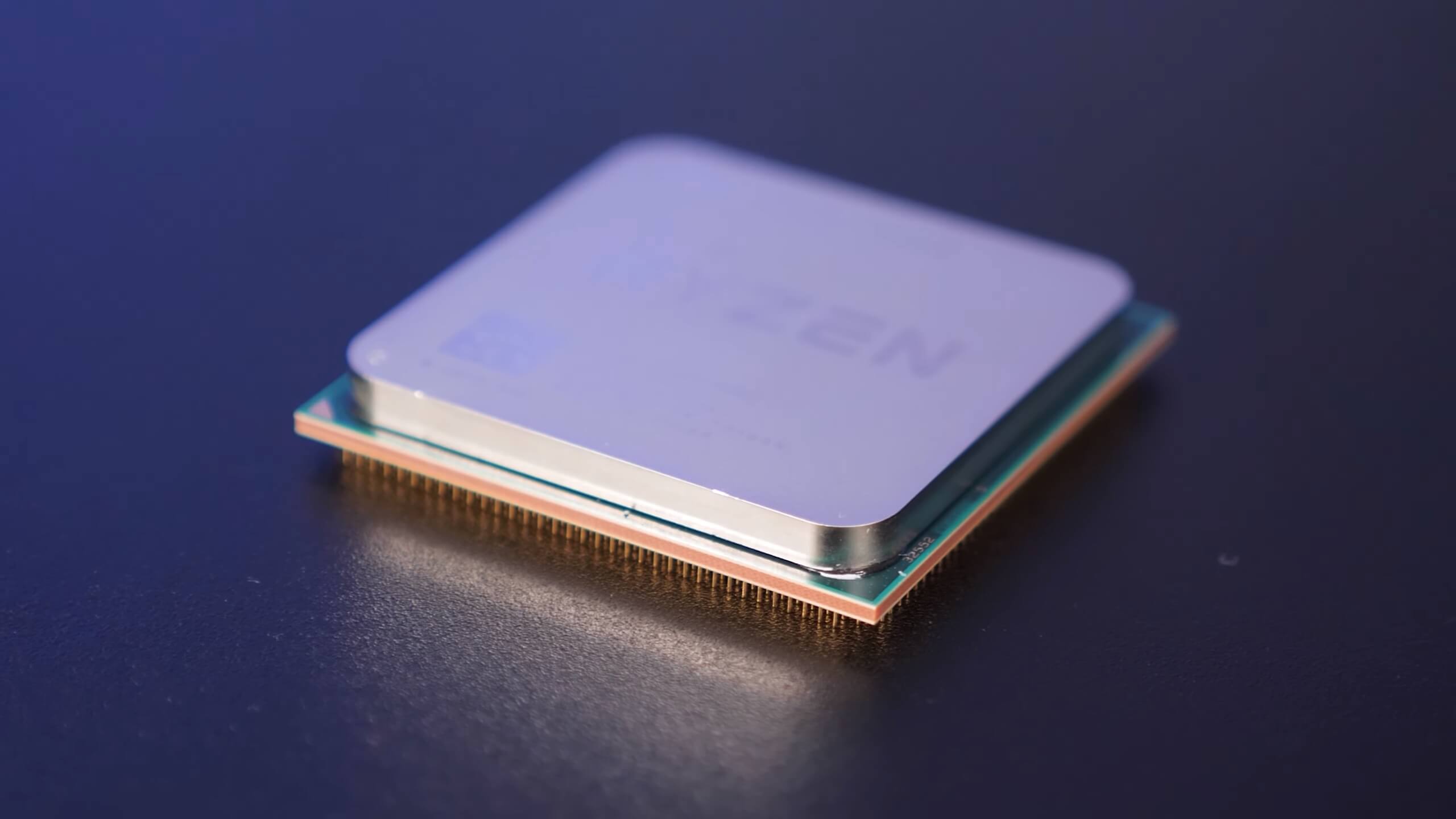
The more affordable $260 Ryzen 5 5600G is better, though we still believe it'due south overpriced and should be positioned closer to $200. Merely nosotros could at least imagine a few scenarios where the 5600G would be a feasible option. Now, what many budget-conscious PC gamers were hoping for was a repeat of the Ryzen iii 3300X, but with integrated graphics for effectually $160. Basically a Ryzen three 3400G replacement, but sadly we never got information technology, sort of.
The Ryzen 3 5300G is a four-cadre / 8-thread processor featuring half dozen CU integrated Vega graphics... the problem is, you tin't purchase information technology, or at least not without all the bits that make information technology piece of work. Y'all encounter, the 5300G is an OEM-just part, but unlike the 5600G and 5700G which spent their outset four months of existence in OEM only condition before being released into the retail channel, the 5300G is set to exist an OEM sectional indefinitely.
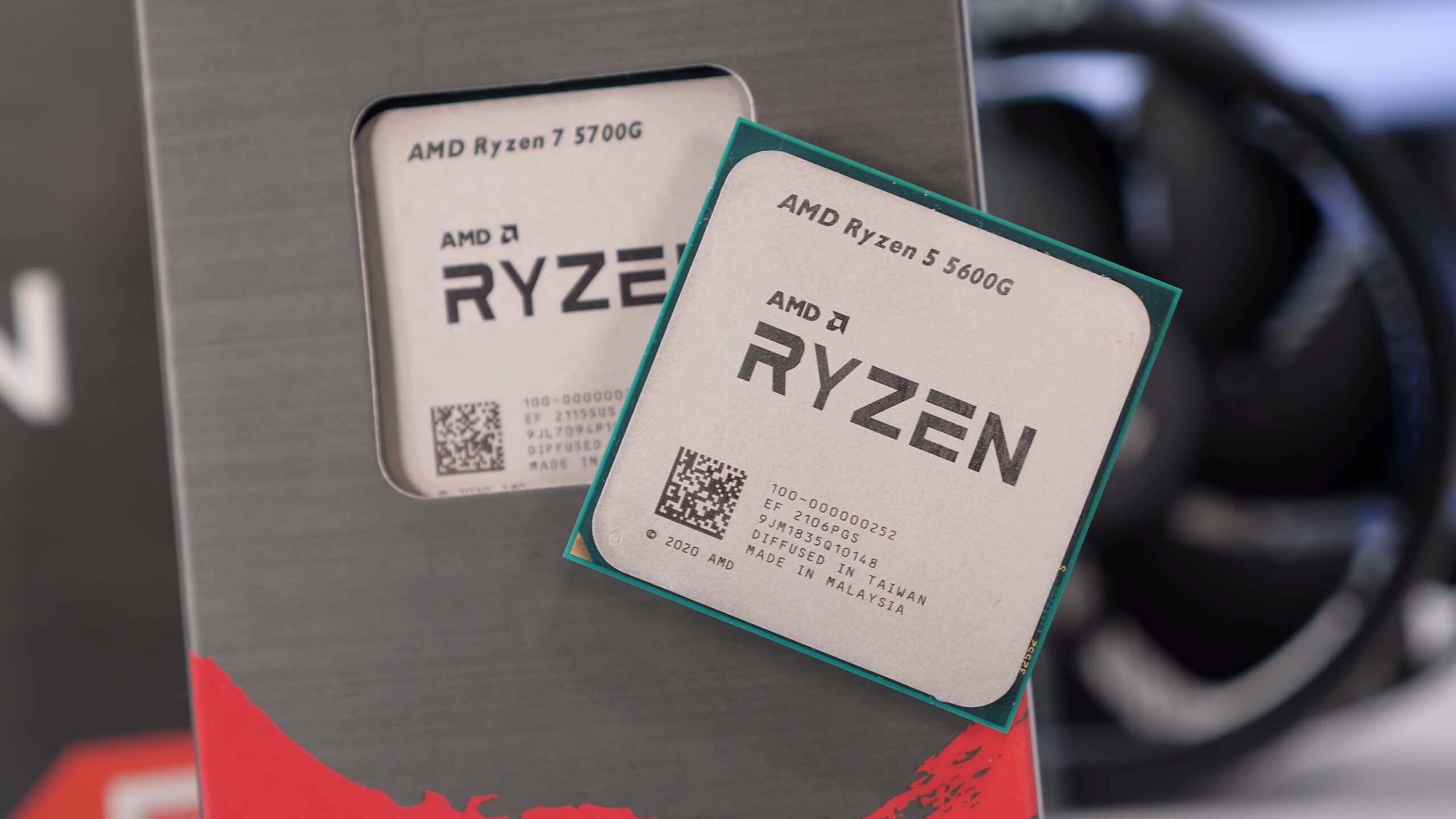
The reason for this probable goes down to supply, as AMD wants to avoid a echo of the Ryzen 3 3100 and 3300X. In order to make a 5300G, AMD is using defective silicon that couldn't exist binned for use equally a 5600G. The Ryzen 3 simply requires four working cores, 8MB of L3 cache and 6 CUs.
For AMD, the 5300G serves two main purposes: it allows them to plough some of that lacking silicon into cash, while too allowing them to service the OEM market place with upkeep-friendly Ryzen parts that don't crave a discrete graphics bill of fare. Thus, they're not interested in releasing a retail 5300G that to see the inevitable need, would accept to dedicate working silicon that could be used for the 5600G and peradventure even the 5700G, silicon they could brand them a lot more coin.
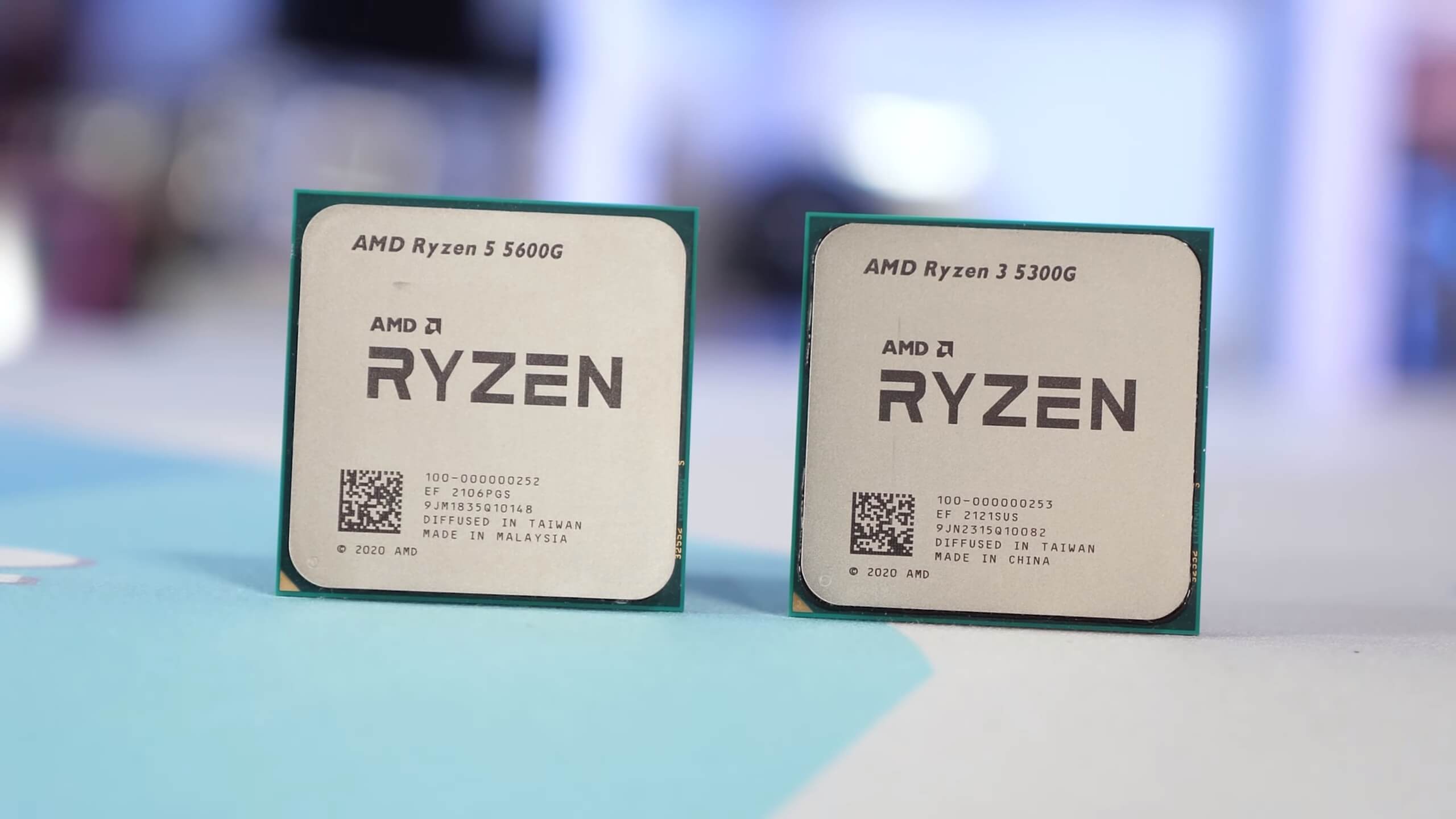
This is why the Ryzen 3 3100 and 3300X disappeared from shelves and then quickly. Yields were good enough that working silicon was destined for use as a Ryzen 5 3600 and Ryzen vii 3700X instead than ensuring supply of cheaper Ryzen 3 parts.
The Ryzen 3 5300G isn't a cut down version of the original Zen 3 parts, but rather information technology's another monolithic die, so information technology'due south a Cezanne part and is therefore a cut downward version of the 5600G and 5700G, with only a quarter of the enshroud of the mainstream Ryzen 5000 CPUs.
With that large drop in L3 cache, no doubt there's going to be a negative impact on performance, though as nosotros recently discovered, with but 4 cores active, you tin can get away with a smaller L3 cache as in that location simply aren't enough cores to have advantage of larger buffers. As for clock specifications, the 5300G boosts to 4.2 GHz with a base of operations frequency of iv GHz and that ways the max heave is 200 MHz lower than the 5600G and 400 MHz lower than the 5700G.
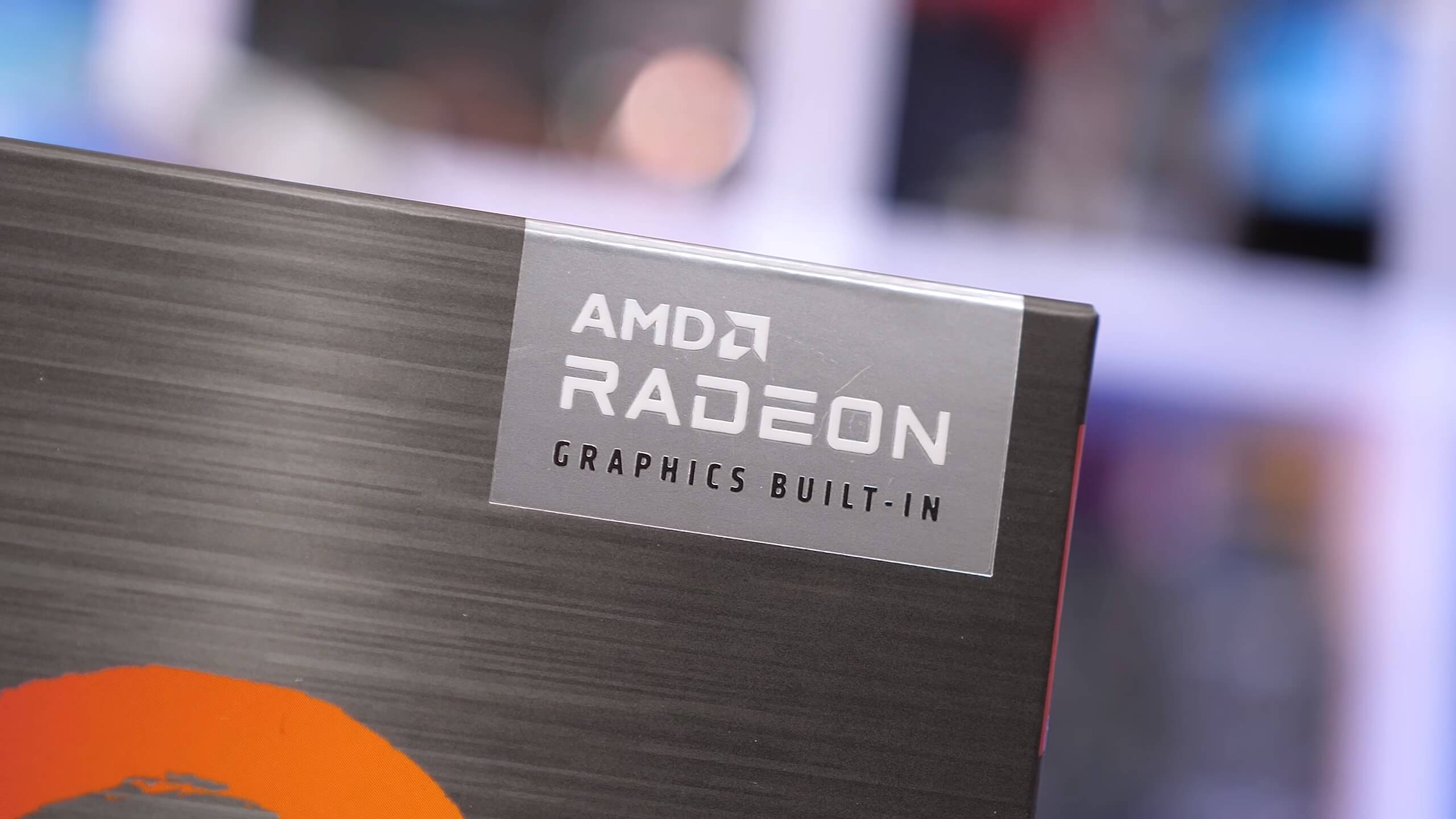
We know why there won't exist a retail version of the Ryzen three 5300G, just if y'all have the take chances to purchase an OEM chip, or are looking at a system using it, how well does it perform? To notice out we need to get into the benchmarks, and for this we've split the testing up into iii sections...
First, we're going to look exclusively at CPU performance, testing the 5300G in applications using an RTX 2080 Ti and so nosotros tin can compare it to the rest of our CPU information. Second, nosotros want to see how well it works with the Vega iGPU, comparing it with a number of other integrated graphics solutions and entry-level graphics cards.
Then finally, we've likewise run many discrete GPU tests using the GeForce RTX 3090, allowing us to compare the 5300G to a range of other CPUs with a powerful graphics carte du jour, showing us what kind of headroom this APU offers gamers, should they upgrade downward the track. Let's get into information technology.
Benchmarks
Starting with Cinebench, nosotros encounter that the 5300G'due south multi-core performance is roughly equivalent to that of the 6c/12t Ryzen 5 2600, and so not bad for a quad-core processor. Information technology's too not a great deal slower than the Cadre i5-10400F, trailing past a 15% margin.
While the performance isn't amazing, if this were a $160 APU, I think this result would be considered very practiced.


The reason for the stronger than expected multi-cadre issue when compared to parts like the R5 2600 and i5-10400F is due to the potent single core performance.
The 5300G scored 522 points and that means for single cadre operation in this workload information technology's only 4% slower than the Core i5-11400F, so a mighty impressive outcome there.

The 7-zip compression functioning is weaker than what we saw in Cinebench, hither the 5300G trailed the R5 2600 by a 10% margin and the i5-10400F by a 19% margin. That said, it was a massive 85% faster than the Ryzen 5 3400G... quite the farthermost upgrade.

The 5300G falls further behind the R5 2600 for decompression work, trailing by 18%, though it was just 9% slower than the i5-10400F. Then we run across that the margin over the 3400G has been significantly reduced, but withal the 5300G was a skilful bit faster offering 29% greater performance.

The Ryzen iii 5300G is able to lean on its strong single core performance in the Adobe After Effects benchmark, matching what are typically much faster CPUs such every bit the Ryzen vii 3700X and Core i7-10700K. When compared to the 3400G the new 5300G was 26% faster, and then some other stiff performance uplift there.

Nosotros're seeing a like thing with Photoshop which only heavily utilizes 1 - 2 cores, and this plays to the 5300G's advantage allowing it to lucifer what are typically much faster CPUs such a the 3700X, 10600K and R5 3600.

Adobe Premiere Pro tends to utilize a lot more of the CPU and as a result the 5300G is located right towards the bottom of our graph with a score of merely 561 points. Surprisingly, this meant the 5300G wasn't any faster than the 3400G in this test.

In Blender, the 5300G was 22% faster than the 3400G, 16% slower than the R5 2600 and almost 40% slower than its bigger blood brother, the Ryzen v 5600G.
Power Consumption

An advantage of the 5300G when compared to the more powerful 5600G is that information technology sips power. Here nosotros're looking at total system consumption of just 111 watts when using an RTX 2080 Ti, basically the same level of power as the 3400G, simply with 20+% better performance in this test.
Integrated Graphics Operation
Moving on to iGPU testing, we'll start with Assassin's Creed Valhalla using the lowest possible quality settings at 1080p. Hither the stock 5300G was good for simply 26 fps on average, which is basically the same level of performance delivered past the old 3400G.
With the iGPU overclocked to 2.4 GHz, we were able to match the stock 5600G with 31 fps, a decent improvement.


The 5300G was slightly faster than the 3400G in Rainbow Six Siege, rendering 52 fps on boilerplate, an 11% improvement. Overclocking boosted operation by a farther 17%, allowing for 61 fps on average, and that'due south slightly improve than a stock 5600G.

Horizon Zero Dawn is a struggle at 1080p and for playable performance you'd probably have to driblet the resolution as low as 720p. Again, overclocking additional performance past 17% and although non terribly useful at 1080p, at lower resolutions this gain could come in very handy.

The faster clocks result in a large 32% performance uplift in Shadow of the Tomb Raider and that makes a real difference to how well the game plays, going from a very laggy 28 fps on average to a much smoother 37 fps boilerplate. Impressively, this saw the 5300G go from only matching the 3400G stock to mimicking the functioning of the stock 5700G.

Moving on, we take Doom Eternal and here the 5300G was good for 40 fps, which is a solid out of the box experience. Once overclocked I was able to push it up to 47 fps, and then an xviii% improvement in that location.

Spotter Dogs: Legion is another game similar Assassin's Creed Valhalla or Horizon Zero Dawn that you'll need to play at 720p to avoid a slideshow. Stock the 5300G was proficient for just 23 fps and overclocked to the max it only provided 28 fps.

Equally you'd expect Counter-Strike: Global Offensive plays very well using the medium quality preset at 1080p and despite offering just 7% greater operation over the 3400G, the 5300G was proficient for 89 fps, so a great gaming experience.

It is possible to achieve playable performance in F1 2022 out of the box with the 5300G, rendering 46 fps on average. It's too possible to heave performance by a further 20%, pumping out 55 fps and at this betoken the 5300G is enabling quite an enjoyable gaming feel.

For the final iGPU benchmark we have Dota 2 and this game runs quite well on the 5300G, though nosotros're but talking about an 11% heave over the 3400G. Meanwhile, our overclock improved performance by a further 15% to 70fps, about what the RX 550 delivers in this title.
Gaming Operation (dGPU)
Now here'south how the Ryzen 3 5300G performs when paired with the GeForce RTX 3090. Granted, no i is aiming to couple those two together, but the idea is to show CPU limited gaming operation, so if yous were to purchase a more powerful graphics card in a few years time, this is how the 5300G would perform relative to other parts under CPU limited gaming conditions.

The F1 2022 performance certainly isn't bad with roughly 200 fps on average and a 1% low of 160 fps, almost twice that of the 3400G, and then a massive upgrade there. The 5300G also beat the R5 2600 quite convincingly and wasn't a great deal slower than the R5 3600, and so I'd say overall quite a good result here.

Next up we take Rainbow Half dozen Siege, where the 5300G merely edged ahead of the R5 2600 and that made it one of the slowest CPUs tested, and past some margin. Although it was a massive 42% faster than the 3400G, information technology was also 27% slower than the 5600G and 18% slower than the R5 3600. Overall, plenty of frames were beingness pushed out here despite the fact that the 5300G was much slower than modern 6c/12t parts.

Moving on to Horizon Aught Dawn which isn't a very CPU demanding title, at to the lowest degree past today'southward standards, we see that the 5300G is able to match the R5 3600, allowing it to outpace the 3400G by a whopping 36% margin. It was likewise just 12% slower than the Ryzen v 5600G, then one of the better results for the quad-cadre 5300G.

THe 5300G appears to practise well in Borderlands 3 when looking at the average frame charge per unit, yet if we plough our attending to the 1% depression operation you'll see that it's significantly slower than the R5 2600 and really everything but the 3400G.
Nosotros're just talking about a 13% comeback in ane% low operation from the 3400G, making the 5300G 35% slower than the 5600G.

Operation in Sentinel Dogs: Legion is more of the same, the 5300G is merely able to match the R5 2600 and while that meant it was notwithstanding l% faster than the 3400G when comparing i% low performance, information technology was also 27% slower than the 5600G.

The Ryzen v 3400G completely tanked in Death Stranding, dropping down as low as 41 fps for the one% low result. That meant the 5300G was over 2.5x faster, once more matching the Ryzen five 2600, though it was a petty over 20% slower than the 5600G.

The 5300G struggled relative to the 6c/12t processors in Shadow of the Tomb Raider, abaft the R5 2600 by a 9% margin and merely beating the 3400G by 12%. Then when compared to the Ryzen 5 5600G nosotros're looking at a 30% drop in performance.

In Hitman two, the 5300G was able to border just ahead of the R5 2600, allowing for 104 fps on average, making it 15% slower than the 5600G. All the same, when compared to the erstwhile 3400G we're looking at a massive 65% increase in performance.

Here's a look at the average performance seen beyond the 10 games tested. As yous can encounter, the 5300G is like to the Ryzen 5 2600, making it 12% slower than the R5 3600, and almost 20% slower than the 5600G. Still, when compared to AMD's last retail quad-cadre APU, we're looking at a 45% performance comeback on average.
What We Learned
The Ryzen v 5300G won't blow your socks off, but that was never the intention nor expectation. Compared to the Ryzen 5 3400G, which is based on the second-gen Zen+ architecture, the 5300G is a huge upgrade on the CPU side, thanks to faster Zen 3 cores.
For gamers, the 5300G is a dainty entry-level CPU despite only offering iv cores with SMT back up, functioning was generally good and significantly better than older quad-cores such equally the 3400G. There were however some instances where frame time operation wasn't great, but you're likely going to be very willing to live with that at the right price.
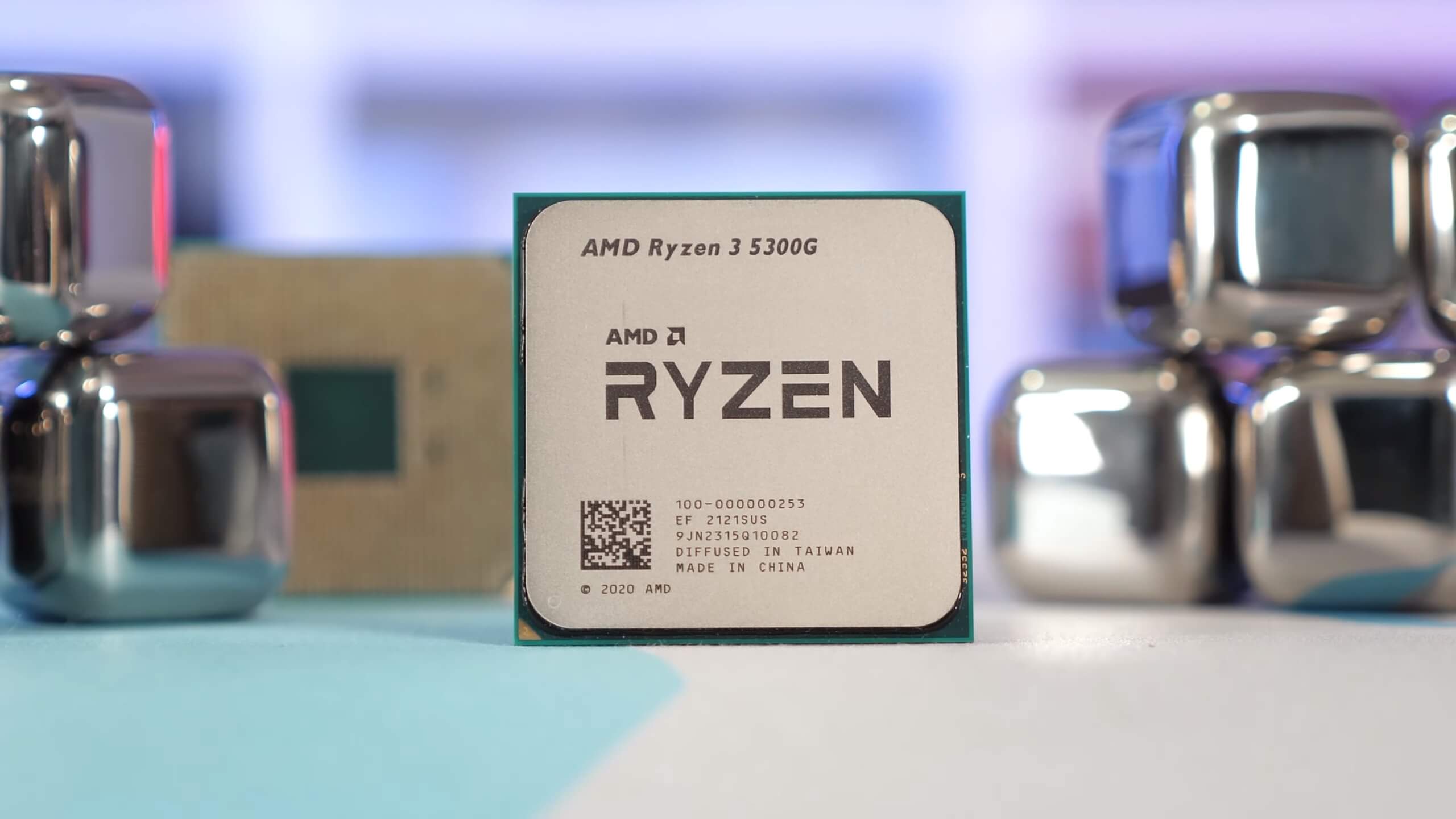
It'south hard to accolade the 5300G a value rating given it's an OEM-only product, but if it were available at retail for between $150 - $170 -- the same price range as the 3400G and ~$100 less than the 5600G -- and so information technology'd be a decent bargain. Granted, the Core i3-10100F tin can frequently exist had for just $110, but it's a slower CPU and the iGPU is basically useless for gaming, making the 5300G a more well-rounded production.
Unfortunately, we'll never get the opportunity to go excited over the 5300G as you'll have to buy information technology in an entry-level OEM motorcar and those typically aren't very skilful. The 2022 HP Pavilion that I purchased to catch the 5300G is the same desktop PC we bought to score an early review of the 5700G, and technically speaking, it's not great.
As well the fact that you have to deal with proprietary motherboard power connectors and a custom PSU, the components aren't very good. The motherboard features a weak 5-phase VRM without any cooling, so look a limited upgrade path on that board. If y'all could buy the 5300G and slot it on an entry-level B550 motherboard that would make for a groovy combo with a decent upgrade path for either a more powerful CPU or graphics card in the hereafter.
Shopping Shortcuts:
- AMD Ryzen 7 5800X on Amazon
- AMD Ryzen 5 5600X on Amazon
- Intel Core i5-11400 on Amazon
- Intel Core i5-10400 on Amazon
- AMD Radeon RX 6900 XT on Amazon
- AMD Radeon RX 6800 XT on Amazon
- Nvidia GeForce RTX 3080 on Amazon
- Nvidia GeForce RTX 3090 on Amazon
Source: https://www.techspot.com/news/91143-amd-ryzen-3-5300g-review-best-value-cpu.html
Posted by: changthatera1965.blogspot.com


0 Response to "AMD Ryzen 3 5300G Review"
Post a Comment